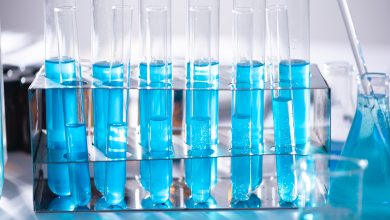Understanding Cholecystitis: Causes, Symptoms, and Treatment Options

Cholecystitis Introduction:
Cholecystitis is a medical condition characterized by inflammation of the gallbladder, a small organ located beneath the liver. This inflammation can be acute or chronic and is often associated with the presence of gallstones, and small, hardened deposits that can block the normal flow of bile. In this article, we will delve into the causes, symptoms, and treatment options for omgblog cholecystitis.
Causes:
The primary cause of cholecystitis is the obstruction of the cystic duct, which leads to a buildup of bile in the gallbladder. Gallstones, typically composed of cholesterol or bilirubin, can obstruct this duct, triggering inflammation. Other causes may include tumors, infections, or a blockage of the bile duct. For more details click here https://eurekathinklabs.com/cholecystitis-practice-essentials-background/.
Symptoms:
Cholecystitis manifests with a range of symptoms, some of which can be severe. The most common symptoms include:
- Abdominal Pain:
Individuals with cholecystitis often experience intense pain in the upper right abdomen. This pain may radiate to the back or right shoulder blade and can last for several hours.
- FevIr and Chills:
Inflammation in the gallbladder can lead to an infection, resulting in fever and chills.
- Nausea and Vomiting:
Cholecystitis can cause nausea and vomiting, especially after meals.
- Jaundice:
If the inflammation spreads to the common bile duct, it can lead to jaundice, characterized by yellowing of the skin and eyes.
- Tenderness in the Abdomen:
The affected area may be sensitive to touch, and abdominal tenderness is commonly observed.
Diagnosis:
Diagnosing involves a combination of medical history analysis, physical examination, and diagnostic tests. Blood tests may reveal elevated levels of white blood cells and liver enzymes. Imaging studies, such as ultrasound or CT scans, can help visualize gallstones and assess the extent of inflammation.
Treatment Options:
- Fasting:
In acute cases, fasting may be recommended to rest the gallbladder and reduce inflammation. This is often accompanied by intravenous fluids to prevent dehydration.
- Pain Management:
Pain relief is crucial, and medications such as acetaminophen or nonsteroidal anti-inflammatory drugs (NSAIDs) may be prescribed.
- Antibiotics:
If cholecystitis is caused by an infection, antibiotics may be administered to combat the bacterial growth.
- Cholecystectomy:
In cases of recurrent or severe cholecystitis, surgical removal of the gallbladder (cholecystectomy) may be recommended. This procedure is often done laparoscopically, involving minimal incisions and a shorter recovery period.
- ERCP:
Endoscopic retrograde cholangiopancreatography (ERCP) is a procedure that can be used to remove gallstones blocking the bile duct.
Prevention:
While it may not be possible to prevent all cases of cholecystitis, certain lifestyle changes can reduce the risk. Maintaining a healthy weight, adopting a balanced diet low in saturated fats, and staying hydrated are essential preventive measures. Regular exercise can also contribute to overall gallbladder health.
Conclusion:
Cholecystitis is a painful condition that can significantly impact an individual’s quality of life. Understanding its causes, recognizing its symptoms, and seeking timely medical intervention are crucial for effective management. Whether through conservative measures or surgical intervention, the goal is to alleviate symptoms, prevent complications, and restore normal gallbladder function. If you suspect you may have cholecystitis or are experiencing persistent abdominal pain, it is imperative to consult with a healthcare professional for a thorough evaluation and appropriate management





